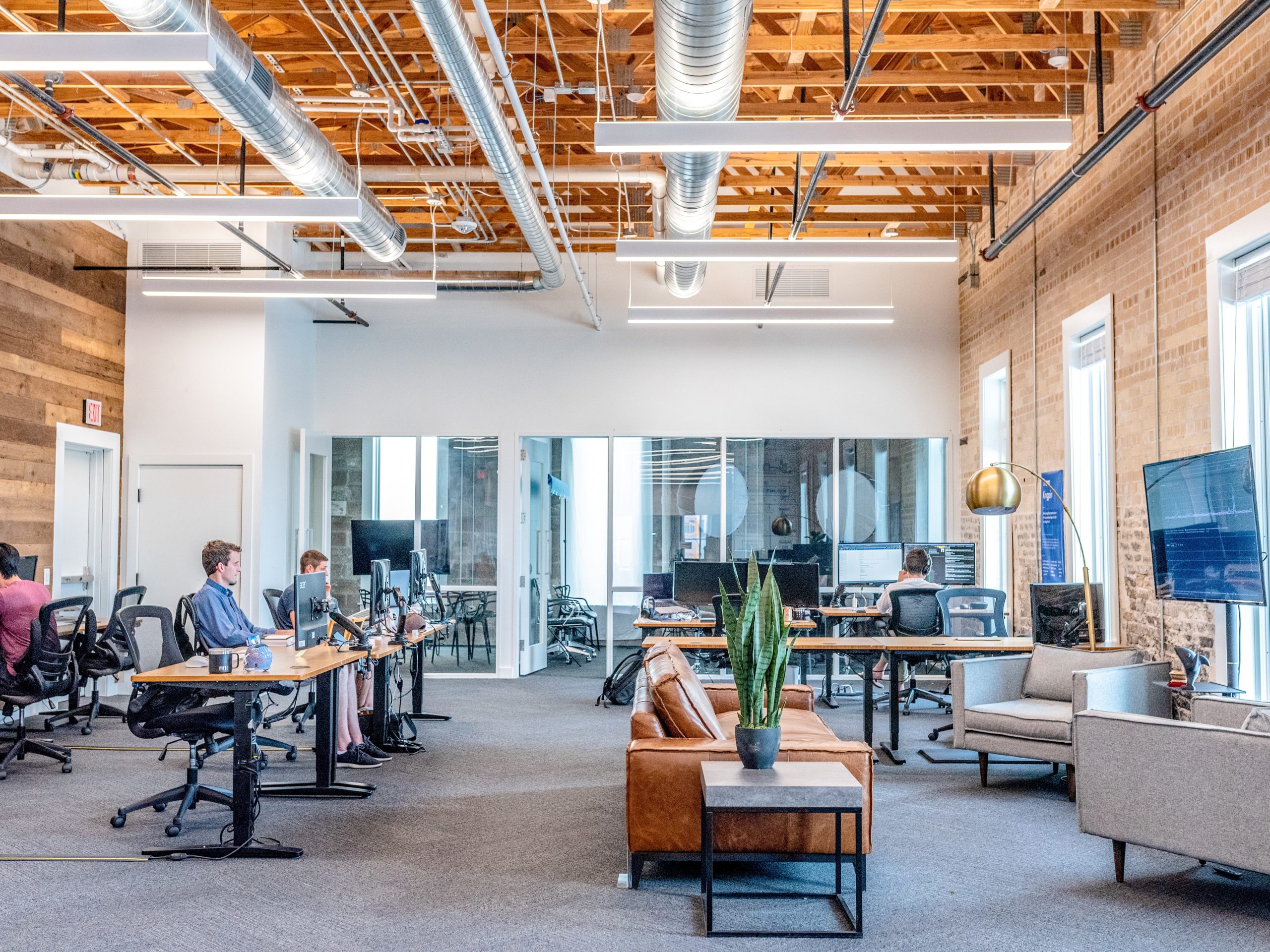More businesses are turning their offices into spaces where employees can go to focus, collaborate and innovate if needed. The idea of the “workplace as a hotel” has entered the mainstream, but not everyone understands what it means or how to implement it. In response to this need for accessible information about workplace strategies, several urban planning firms are offering services as consultants for companies seeking to reimagine their office space. Let’s take a look at what is flex space, its types, its benefits to the employees, and why a company should use flex space.
With an increasing number of people living in urban centers and remote workforces expanding, businesses need an environment that supports collaboration without forcing employees to leave the premises every day. Flexible spaces help with this transformation by providing a wide range of amenities that allow business owners to accommodate different needs while keeping things organized and efficient.
What Is Flex Space?
Flex space is the idea of transforming office environments into spaces that are more dynamic and less rigid. The definition of what makes a workplace flexible is highly subjective. You may find that it doesn’t apply to your particular configuration. But in general, flexible spaces are designed to meet a variety of needs, whether it’s collaborative work, formal presentations, or socializing.
Flexible office spaces also incorporate technology to increase productivity and collaboration, including digital tools like videoconferencing and virtual meeting software. If a company is investing in a flexible office space, you can bet that it values employee satisfaction and productivity above all else. Flexible office space is a way to accommodate a variety of workflows and schedules. Allowing employees to work the way they’re most comfortable.
Whether you work best in the morning or late at night, alone or in a group, or in a specific location, you can have a place to do it in your office. That way, you’re not disrupting anyone or being forced to leave the office to complete tasks that require a different setting.
Types Of Flex Space
There are several types of flex space that can help employees and their organizations run more efficiently. If you want to create a space that is truly flexible, incorporating a few of these options can help you meet your organizational goals.
Collaborative Spaces
If you want to encourage collaboration, providing a common area where employees can work together is a great first step. You can also add technology, like whiteboards and projection screens, to facilitate this type of work wherever it is needed.
Mobile Workspaces
Mobile workspaces are designed to accommodate workers who are always on the go. To do this, these spaces might include a lounge area where employees can take a break and have informal gatherings, or a mini gym where employees can go to stay fit and healthy.
Specialty Spaces
Specialty spaces are for specific tasks, such as videoconferences or brainstorming sessions. Use these spaces to make sure that certain activities aren’t disruptive to other employees or happen in the wrong place.
Benefits Of Flex Space
With access to a wide range of amenities tailored to specific tasks, employees can do their best work without feeling boxed in. Flexible offices free up time that would otherwise be spent finding a place to go. It allows for more productivity overall. Also, it makes it easier to accommodate employees who may have special needs, such as expecting mothers or people with disabilities.
Flexible office spaces also create a more comfortable work environment that benefits companies financially. A happy, engaged staff is more likely to stay with their company, which lowers turnover and boosts productivity. Plus, investors take note of these changes and are more likely to invest in companies that have offices that reflect their values.
Why Should Your Company Use Flex Space?
Flexible offices make it easier for employees to focus, collaborate and innovate. By incorporating a few key elements of flexible office space, you can transform your office into a hub of productivity and creativity. Better focus. When you’re in a noisy, distracting environment, it can be hard to focus on what you need to do. When you have the right setup, you’re more likely to get work done without being interrupted. Better collaboration.
Collaboration is an important part of how many companies work today, but it can be difficult to facilitate in an open floor plan. With the right furniture and technology, you can facilitate collaboration without the noise. Better innovation. Innovation happens when employees take the time to think creatively and push past the status quo. With the right environment, you can help these ideas flourish.
How Does Flex Space Help Employees?
Flexible office spaces can help you become a more productive employee in a few ways. First, you can choose the work environment that best meets your needs. Do you work best when you’re around others? Or would you prefer a quiet room with a door you can close when you need to focus? The choice is yours. Next, you can choose how you want to work. Do you like working in person or remotely? Or do you prefer both?
Having these options available means you can work the way you’re most comfortable and productive. Third, you have access to technology that can help you work smarter. Communication tools like video conferencing can help you collaborate with coworkers, and digital tools like project management software can help you keep track of your workload.
How to Create a Flex Space Plan
Your plan for creating a flexible office space will depend on the unique needs of your organization. However, there are several general considerations that should inform any decision about the layout of your office.
Location
The location of an office can affect the design of the space. If you work in a high-density area that requires you to make noise, you’ll need to make different design decisions than if you are in an isolated building in the suburbs.
Office Culture
Your office culture makes a huge impact on the design of your office. If your company is big on collaboration and socializing, you’ll need different types of spaces than a company that prefers to keep things quiet.
Workflow
How you work can inform your design decisions, too. If you work in teams, you’ll need different spaces than a one-person worker.
Budget
Last but not least, you’ll have to consider your budget when designing your office. Flex space doesn’t have to be super expensive, but it does require some upfront financial investment. You can start small and incorporate new pieces over time if you don’t have enough money to revamp your office at once.
Bottom Line
Finally, flexible office spaces are designed to meet the needs of an increasingly diverse workforce. By providing employees with different types of collaborative and solitary work environments and technology that helps them work smarter, these offices help employees get more done in less time.
If you’re ready to transform your office, consider implementing some of the features that make up a flexible space. With a little creativity, you can transform your office from a stuffy, traditional setting into a modern, dynamic space that attracts top talent and encourages collaboration and innovation.
READ MORE:






